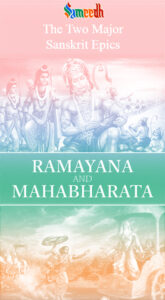The ancient Sanskrit epics the Ramayan and Mahabharat comprise together the Itihāsa (“Writer has himself witnessed the story”) or Mahākāvya (“Great Compositions”), a canon of Hindu scripture.

The two major Sanskrit epics of ancient India are the “Mahabharat” and the “Ramayan.”
- Mahabharat: The Mahabharat is one of the most significant and longest epic poems in the world. It is traditionally attributed to the sage Vyasa and is believed to have been composed over a long period, with its final form dating back to around the 4th century BCE. The Mahabharat is an epic narrative that tells the story of the Kurukshetra War, a great conflict between two groups of cousins, the Pandavas and the Kauravas. The text also contains a wide range of stories, teachings, and dialogues, including the Bhagavad Gita, a sacred scripture within the Mahabharat.
- Ramayan: The Ramayan is another ancient Indian epic attributed to the sage Valmiki. It narrates the life and adventures of Lord Rama, an avatar of the god Vishnu. The Ramayan follows Rama’s exile, his rescue of his wife Sita from the demon king Ravana, and his eventual return to the kingdom of Ayodhya. The story is filled with moral and ethical teachings and is revered for its portrayal of dharma (duty and righteousness).
Both the Mahabharat and the Ramayan are not only important literary and cultural works but also have significant religious and philosophical implications in Hinduism and continue to be widely studied and revered in India and among Hindu communities worldwide.